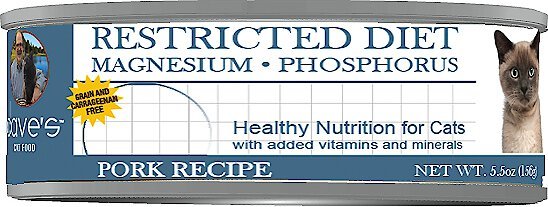Taste of the Wild Rocky Mountain Feline Recipe with Roasted Venison & Smoke-Flavored Salmon Dry Cat Food
With 42% protein, this recipe is packed with nutrient-rich energy for cats of all ages. The unique combination of roasted venison and smoke-flavored salmon provide your cat with the proper protein, vital to a lean and healthy body. And we pair that protein blend with legumes, vegetables, fruits and carefully selected ingredients to provide balanced nutrition and a taste cats crave.
With 42% protein, this recipe is packed with nutrient-rich energy for cats of all ages. The unique combination of roasted venison and smoke-flavored salmon provide your cat with the proper protein, vital to a lean and healthy body. And we pair that protein blend with legumes, vegetables, fruits and carefully selected ingredients to provide balanced nutrition and a taste cats crave.
- High Protein Content – 42% of this recipe is protein from a unique and balanced combination of chicken meal, roasted venison, smoke-flavored salmon, ocean fish protein and vegetable protein sources. This blend provides nutrient-rich protein, with a great meaty taste, for a healthy body.
- Species-Specific Probiotics – Healthy digestive and immune systems are vital to the overall health of your pet. Our proprietary Viables Probiotics are developed specifically for cats and added after the cooking process to ensure viability. Each pound of Taste of the Wild provides 80 million live, active cultures that help support healthy digestive and immune systems.
- Taurine – This essential amino acid is beneficial for all cats and helps to maintain healthy heart and eyes.
- All Life Stages Nutrition – Formulated to meet the nutritional needs of your cat throughout all stages of life, from kitten to senior cat.
- Omega Fatty Acid Blend – Balanced levels of omega-6 and omega-3 fatty acids work together to support healthy skin and a shiny coat.
- Antioxidants – Legumes, vegetables and fruits, including peas, sweet potatoes, tomatoes, blueberries and raspberries, provide nutrients that help support your cat’s overall well-being, while guaranteed levels of zinc, selenium and vitamin E support the immune system.
Additional information
| Country of Origin | Made in USA |
|---|---|
| Breed Size | Extra Small, Small, Medium, Large, Extra Large |
| Flavor | Venison and Salmon |
| Health Features | Heart Health, Immune System Support, Vision Health, Digestion Support, Skin & Coat Health |
| Indoor/Outdoor | Indoor |
| Life Stage | Adult |
| Primary Flavor | Venison, Salmon |
| Special Diets | Probiotics, Grain Free, High Protein, AAFCO Formulated, Omega Fatty Acids |
| Packaged Height | 21 in. |
| Packaged Length | 3.1 in. |
| Packaged Width | 13.75 in. |
| Manufacturer Part Number | 9574 |









by Milam
I’ve been feeding this to my cats for years, excellent product!
by Mike
My cats has digestive issues and this is only food he tolerates.
by Kathy
Grain-free and my 14 year old Merlin likes it. He’s been eating it for years.